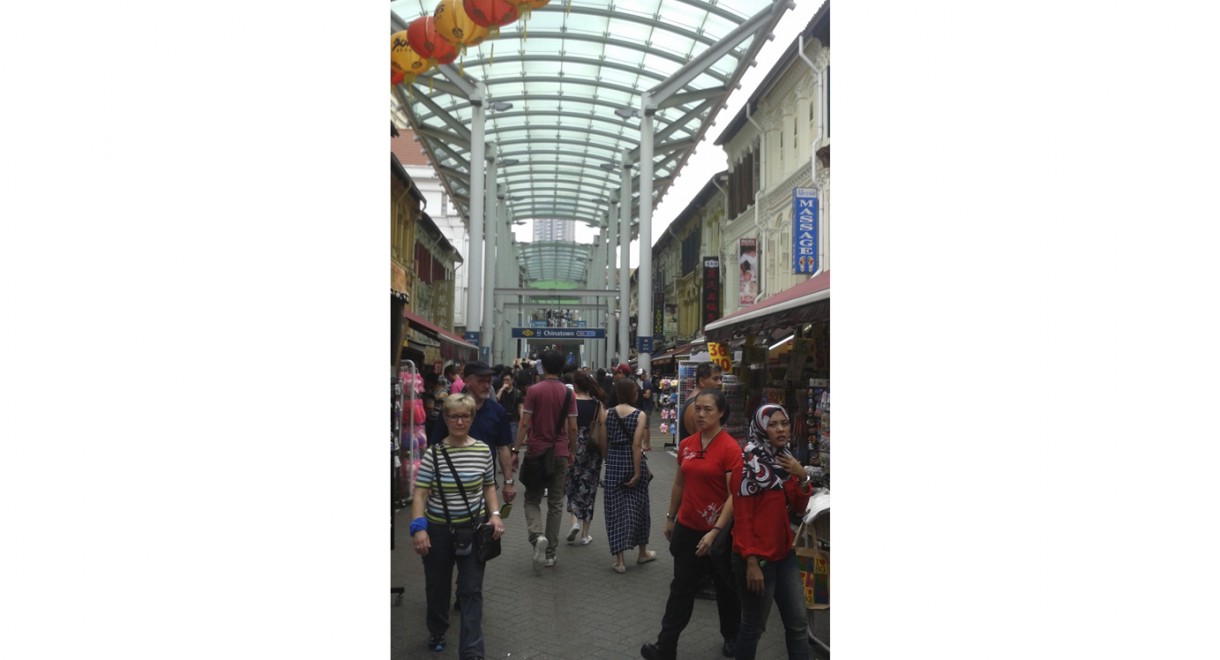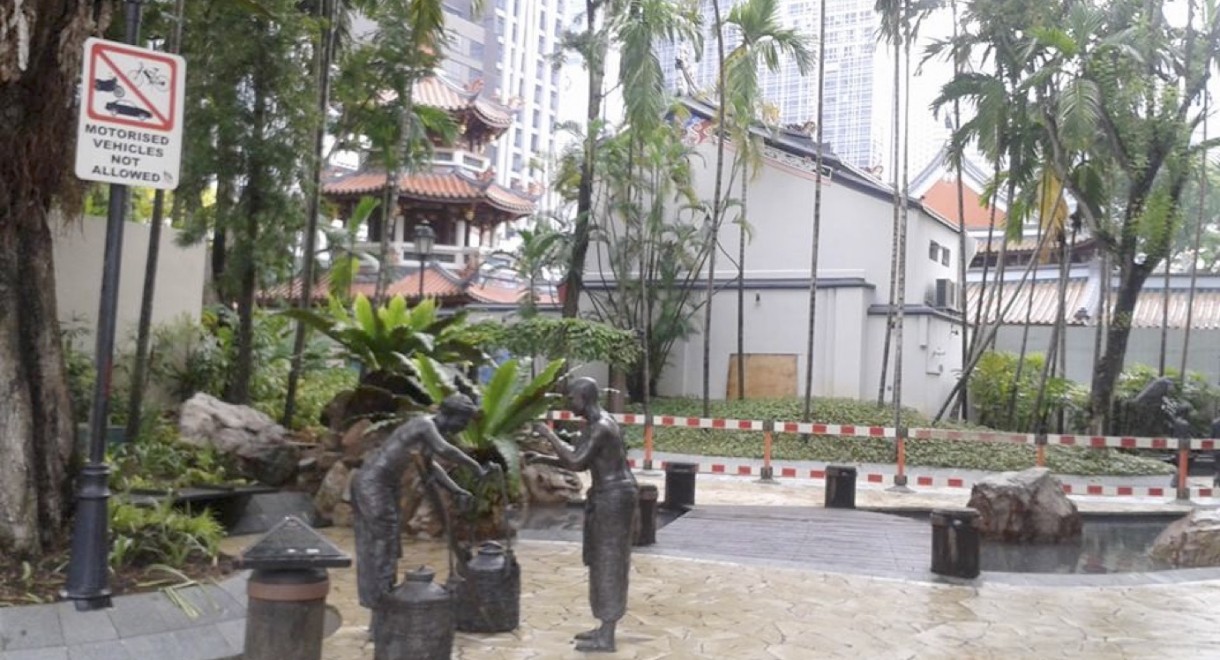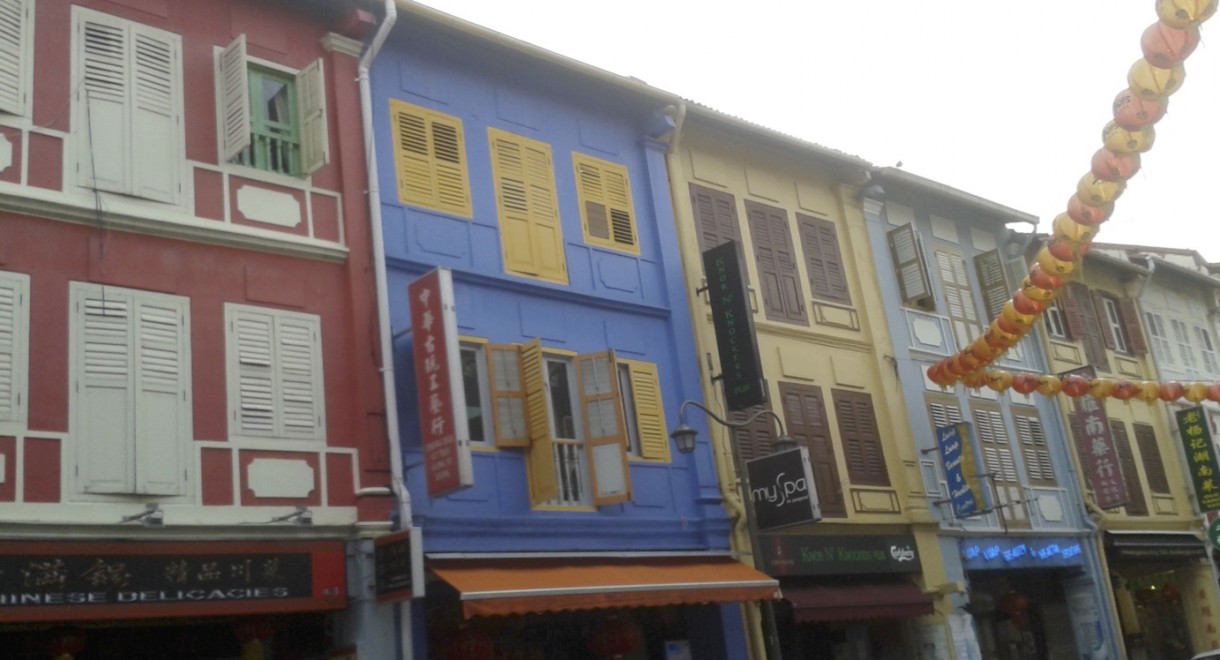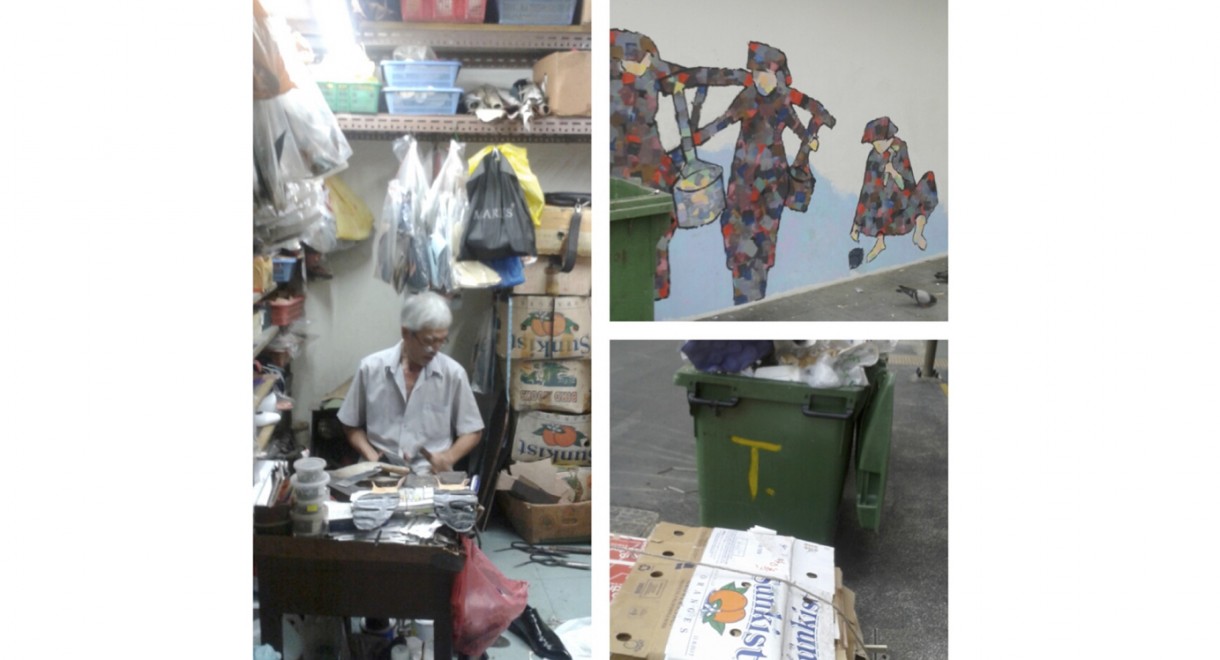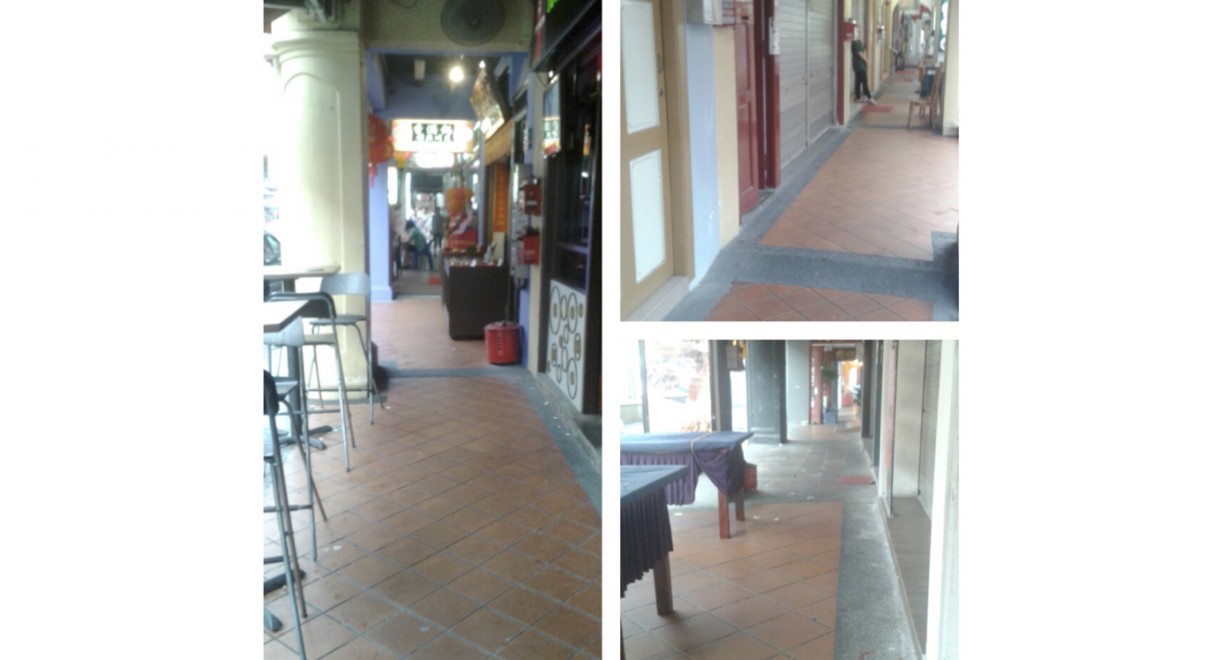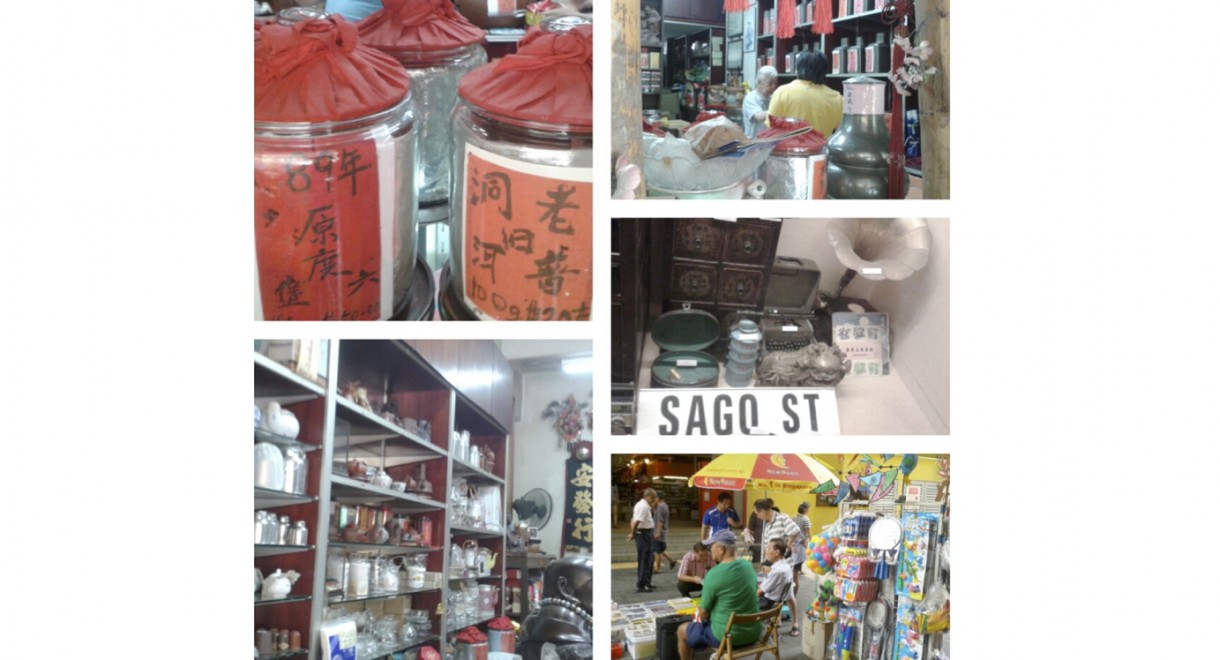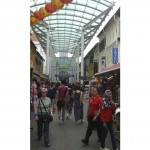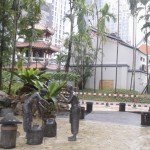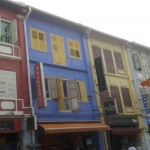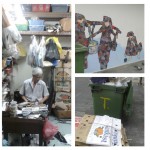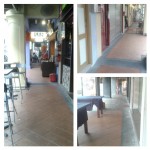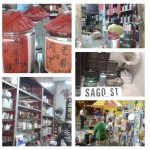Louise Lim Mei Lan (林美兰)
我是土生土长的新加坡人。从执教32年的教职退休后,便在本地博物馆担任义务导览员。这次有幸参加“牛车水光影纪实“活动,工作团队精心安排的工作坊以及来自不同年龄层和行业的成员的交流,让我重新发现摄影和牛车水的另一种美。时至今日,牛车水仍有一些经历过风雨的年长人士生活在这个地方,像广安堂的老夫人、顺德会馆负责人、牛车水大厦内的鞋匠、卖菜的老夫妻等。如果能安排一场他们和学生的公开讲座,将能让更多年轻人获益。我的摄影短文谈到牛车水吸引不了本地人的无奈,希望能抛砖引玉让更多人加入推动与关注历史的行列。I am a locally-born and bred Singaporean. After retiring from 32 years in the teaching profession, I have been a volunteer docent guide in local museums. I had the good fortune of joining the Picturing Chinatown project; from the project team’s carefully-planned workshops and interactions with participants of different age groups and occupations, I rediscovered charm of a different kind in photography and of Chinatown. Until today, Chinatown is still home to some senior citizens who have weathered the ups and downs of life, such as the elderly proprietress of Kwong Onn Tong, the person in charge of Shun Tuck Community Guild, the cobblers and elderly vegetable stallholders inside Chinatown Complex and so on. If a public talk could be organised for them to speak to students, more young people would be able to benefit. My photo essay is about Chinatown’s helpless inability attract local Singaporeans; I hope to offer my humble views here so as to have more people join the ranks of history enthusiasts and advocates.
May 8, 2015
Chinatown is Singapore’s primary landmark – a record of the blood, sweat and tears of the early Chinese immigrants, with perfectly-maintained shophouses, and a bygone era’s wet markets and hawker centres peddling delicious dishes. However, to a lot of Singaporeans, Chinatown is familiar yet foreign territory; some have never set foot there, nor have they ever seen any reason to do so.
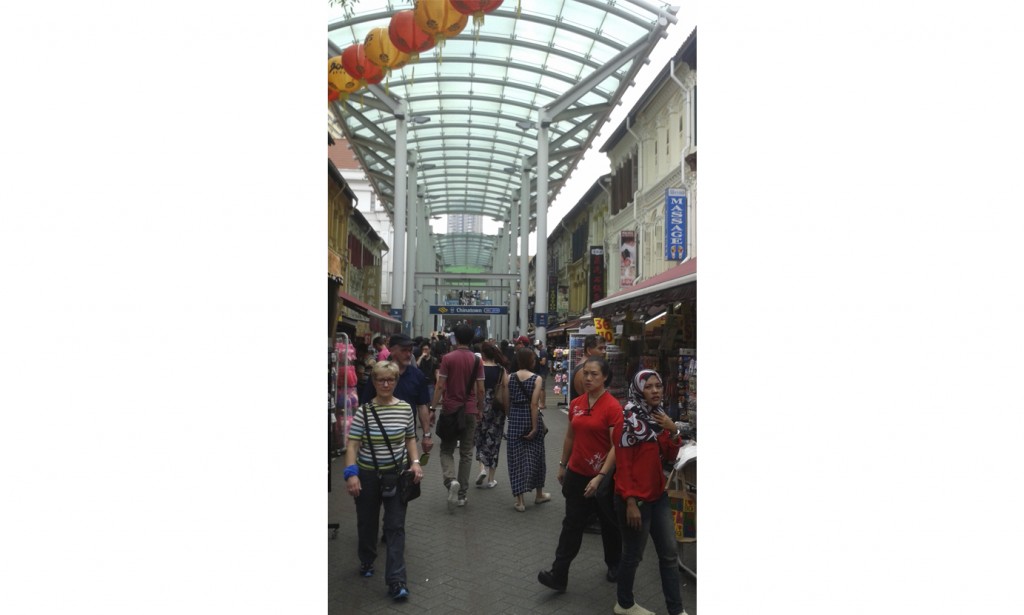
Picture (1): Weekday crowds in Pagoda Street
After Chinatown MRT Station started operating, it attracted massive crowds. Outside the Pagoda Street entrance, there are shops aplenty, with Chinese restaurants sprouting like mushrooms after rain. Nowadays, in the hustle and bustle of the crowds there, what we see are foreign faces in a range of hues, and what we hear are foreign tongues, since for tourists, this place is a food and shopping paradise.
The survival of Chinatown’s history, as well as its current importance, are increasingly under threat. For Singaporeans who love to eat out, the fresh ingredients offered by Chinatown’s wet markets no longer have any attraction. Even cheap and tasty street food cannot compete with the allure of sophisticated air-conditioned restaurants. What with Singaporeans’ hectic lives and their fondness for overseas holidays, the history of this place cannot hold their attention. Transforming Chinatown’s destiny has thus become an important issue.
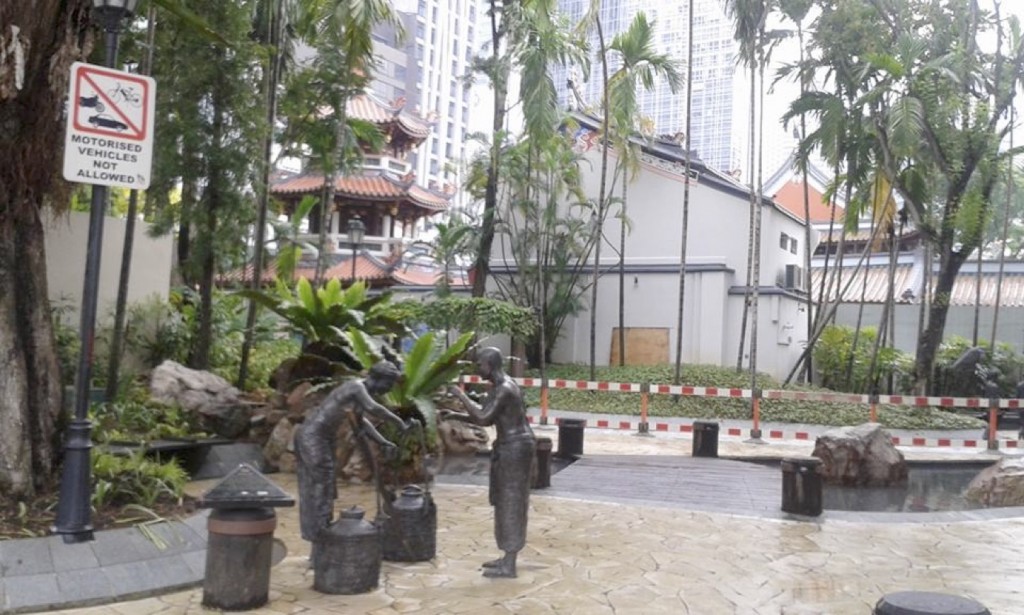
Picture (2): Even at Telok Ayer, Chinese immigrants will gather
To older generations of Singaporeans, Chinatown is a place redolent with memories. In its early years, Chinatown was full of life; for many who, after many struggles, came to the Straits Settlements to build a better life, it was the first place they settled. Those who lived here were the coolies who worked in the dockyards, samsui women who worked as construction workers, fortune-tellers, barbers, rickshaw-pullers, and those who set up stalls selling various goods. As night fell, there would be an interminable stream of customers browsing the stalls under the yellow glare of streetlights, with the sounds of people haggling and touting goods forming a vibrant duet. Simply perusing each and every stall would make the day fly by happily. In the era before television, Chinatown was a great place to pass the time.
When I was a child, I enjoyed going with my mother to shop at People’s Market (on the now-empty plot of land next to the present-day People’s Park Complex). For me, it was an exciting adventure to wander around the stalls across the road after eating yong tau foo from a street hawker. I liked watching the roving entertainer uncles perform illusions, such as fire-eating and impalement. Although my mother never bought any of the so-called ‘ancestral’ potions, the uncles never once got annoyed. After each performance, they would still be full of vigour, cheerfully promoting their ‘ancestral’ medicinal pastes and massage oils. In my eyes, they were like the heroes in martial arts legends who trained in the depths of the mountains and led simple and righteous lives.
In those days, the whole street was only illuminated by the weak rays of gas lamps at the various roadside stalls; there were no streetlights. Along the shadowy street, I would hold my mother’s hand, filled with both curiosity and fear, seeing many people and incidents I did not usually see. These are the childhood memories Chinatown has left to me.
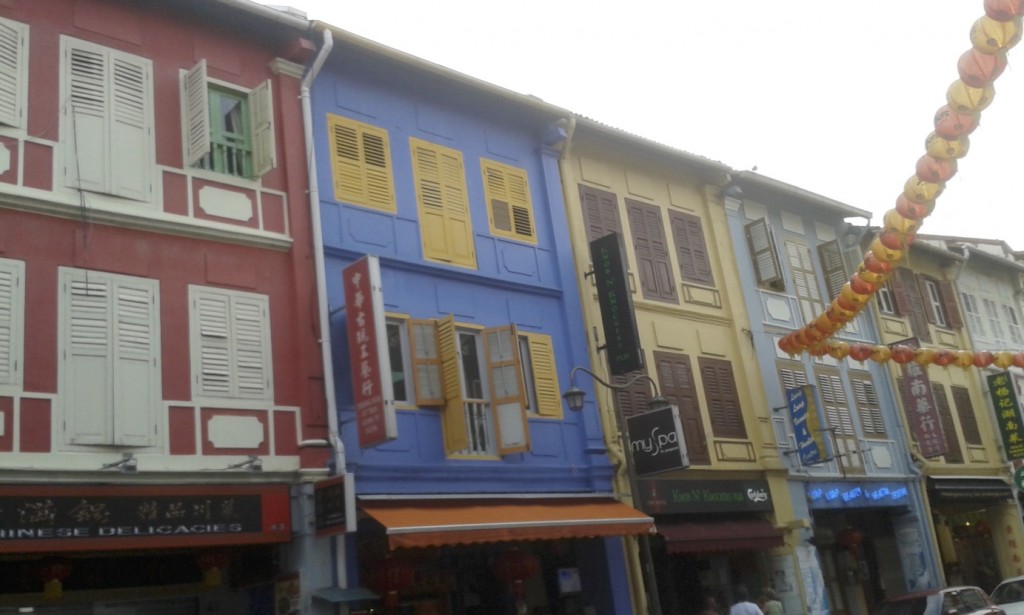
Picture (3): Behind prosperity lies profound change
It is fortunate that today, the buildings full of features unique to an immigrant society have been preserved. However, the prosperity visible in the vivid multicoloured skyscrapers is jarring, given the history of struggles faced by the industrious and thrifty immigrants.
When the early Chinese immigrants came south to escape hardship and struggle to survive, Chinatown was the first place they settled. It has witnessed the blood, sweat and tears of countless numbers of them. At the time, every shophouse contained several tiny rooms, each of which was crammed with up to six or seven people. A dark, poky kitchen would be cluttered with kitchen utensils, crockery and cutlery. Dozens of people would compete for a single bathroom and toilet.
As increasing numbers of Chinese migrated to Singapore, it became harder to find work and make ends meet. Nonetheless, everyone resolutely made the most of their strength and skills, and built humble but independent lives. Among these immigrants, some were able to make it big – they managed to buy shophouses, and did their ancestors proud by bringing over their families from China, and producing many offspring. These people remained in Chinatown, striving for a living. Some even expanded their trade, passing it to subsequent generations. On the other hand, others were more unfortunate – unable to return to their hometowns, they led lonely lives in Chinatown till the end of their days.
When I was Secondary 1 (1968), I failed mathematics, so my father used to bring me to Chinatown for tuition, as my mathematics tutor lived in a shophouse there. Unfortunately, my impressions of this place are nebulous. I only vaguely remember that the staircase and flooring were made of wood, and around the front door, there were quite a few hawker stalls that were packed every night. I would hear adults saying that in this neighbourhood, secret societies from different dialect groups would get into fights due to territorial disputes, whipping out parangs to injure and kill at the least provocation. Because of this, people rarely ventured outdoors after nightfall.
During that period, the sanitary conditions in Chinatown were very poor, and the gutters often emitted foul odours. But rent was cheap, and all people expected was a place to live, so as time passed, more and more people occupied the shophouses, which became increasingly overcrowded. These shophouses housed opium dens, undertakers, brothels, and theatre groups, as well as clan associations, teahouses, Chinese medicine shops, and various businesses. They were frequented by opium addicts, prostitutes, secret society members, and seamstresses, as well as university students, teachers, and businessmen – a motley crowd.
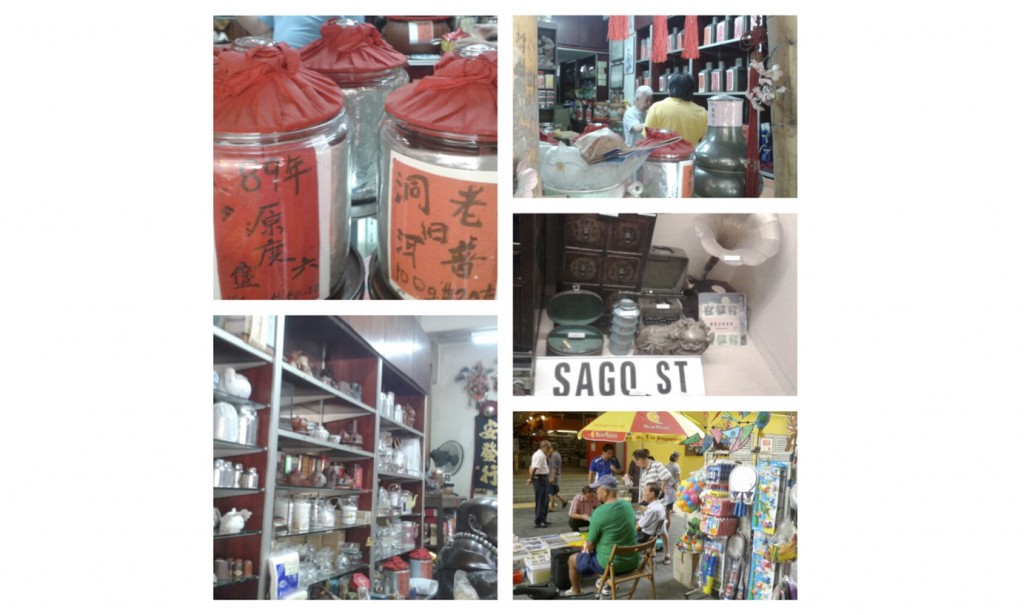
Picture (4): A rush of sentiments from bygone days
The Singapore of today is an affluent metropolis; only Chinatown continues to maintain its unique historic atmosphere. Going into Chinatown, it is as if we have travelled in time – the setting is redolent with character, exuding a boundless charm. The old-fashioned shops, the old-fashioned décor, the toys from my childhood which today’s supermarkets no longer sell, the roadside stalls quietly standing guard, the elderly folk waiting to chit-chat with passers-by – all these are part of one of our city’s picturesque tourist spots.
If one day you feel that life is lacking a little spice, and you are fed up with shopping malls, why not take a look around here to get a sense of life in the fifties and sixties, and experience a different kind of thrill?
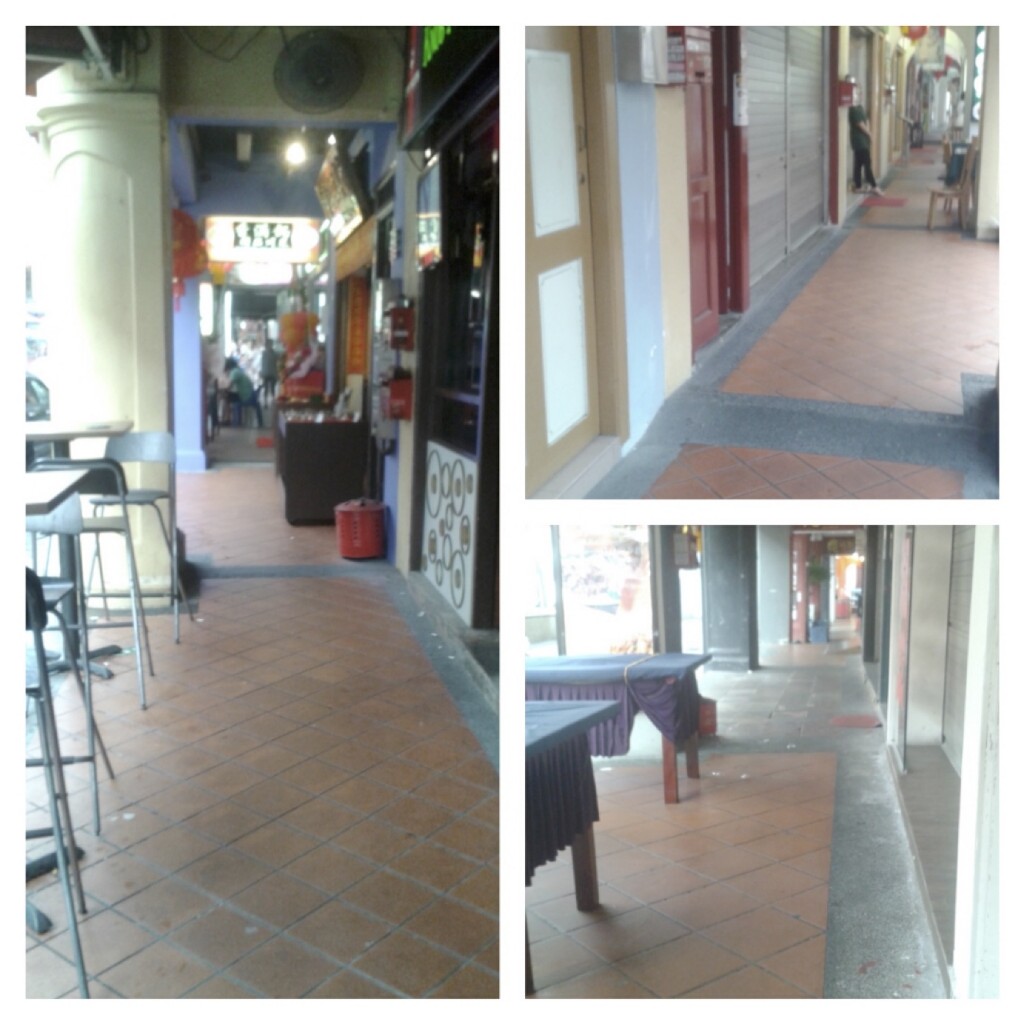
Picture (5): : Five-foot ways, where are your stories?
The shophouses from British colonial times all had a walkway around five feet wide, which everyone called a ‘five-foot way’. Chinatown’s five-foot ways were where many people carried out their livelihoods. As the immigrant population grew larger and larger, jobs were hard to find, so many began to set up shop along five-foot ways. Some would mend clothes, repair shoes, cut hair, write letters, tell fortunes for those who passed through these walkways. Others would sell cigarettes, snacks, sweets, or license comic strips, or conduct other trades. They relied on these earnings for their humble lives, and were able to send money home to their families every month. In this way, they too contributed to Singapore’s present prosperity.
When it grew late, the security guards or old people keeping guard liked to sleep on rattan mats along the five-foot ways. They said it was cool and airy there, and didn’t require a fan for them to sleep comfortably till sunrise. Most importantly, it meant they didn’t have to pay rent, so they could save a fair bit of money, and salt away a bit more for themselves.
The shophouses under conservation today have now become the premises of restaurants and souvenir shops; never again will we see people cutting hair, repairing shoes or mending clothes along these five-foot ways. There is seating and goods of all sorts arrayed along the five-foot ways. But in this area, other than the elderly and middle-aged people who used to live here or still live here, there is nobody who knows the lives and stories that took place here. In recent years, with the rapid growth of restaurants offering China cuisine, and new immigrants from China, Chinatown has soon become literally a China Town. The name ‘Chinatown’ will thus be erased from collective memory.
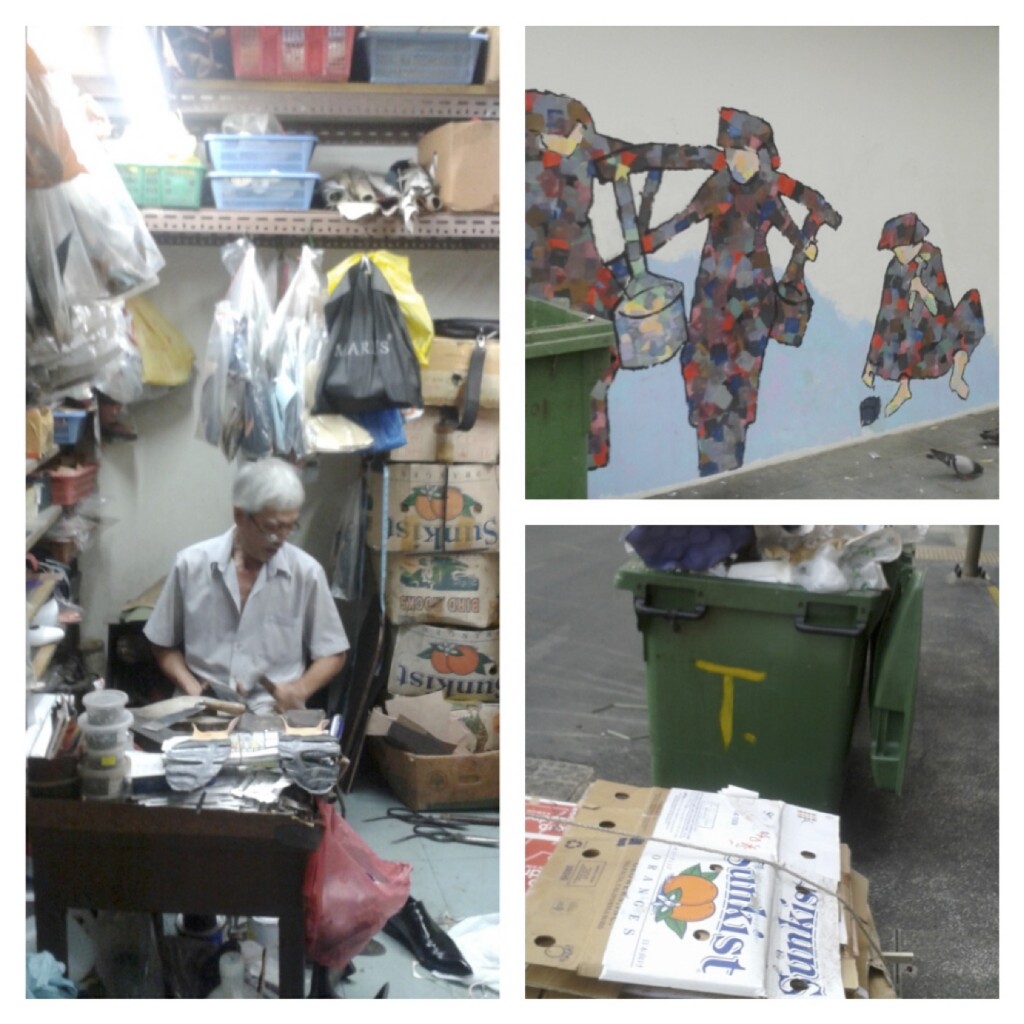
Picture 6: My heroes
Chinatown has become old. Some of the ordinary townspeople who contributed to Singapore’s economic growth, such as the samsui women who hauled earth and carried bricks in construction sites, and wayang performers, have already become history. Smith Street was dubbed Theatre Street, since it had an opera house that staged Cantonese operas there – Lai Chun Yuen Theatre.
It had a group of professional artistes, many of whom were illiterate because they had no opportunity to go to school. Impressively, with much strenuous practice and dogged memorisation, they were nonetheless able to know every lyric and line of the operas by heart, and performed many moving scenes. Through their superb acting skills, they earned their daily bread.
Due to their emotional bond with China, the opera troupe ardently supported the Revolution of 1911, as well as the Chinese resistance forces fighting the Second Sino-Japanese War. The troupe publicised the Revolution through performances of operas like The Emperor and the Assassin, and raised money for the compatriots who were battling the invaders, displaying an admirable patriotism.
During the Japanese Occupation in 1942, Lai Chun Yuen Theatre was destroyed by Japanese bombing, and afterwards was rebuilt as a department store. On the outside, the Lai Chun Yuen Theatre of the early twentieth century and the completely redecorated heritage site of today (now the premises of the Singapore branch of the Tzu Chi Foundation) seem to be much the same. Unfortunately, the building’s glorious history has probably been long forgotten.
Chinatown has become old, and the elderly people who are still quietly toiling away in Chinatown have become even older. Among them, some are still labouring at their various trades, having spent most of their lives repairing and handcrafting shoes in exchange for their three meals a day. Others are carrying on their family’s small businesses, while others collect cardboard boxes to survive. They radiate the tenacity and grit of the early immigrants; we can only revere their spirit.

